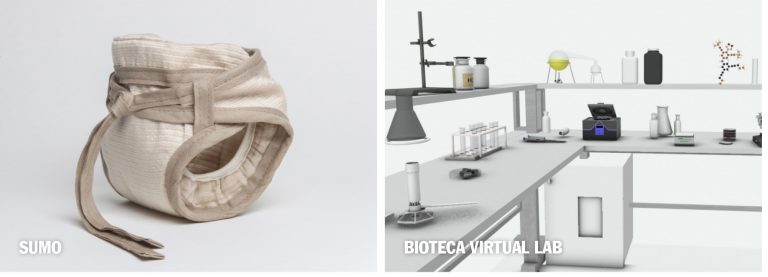It’s official! Out of 1409 entries to the WDCD No Waste Challenge, 85 of the brightest and boldest have been nominated for the top prize. The shortlist was revealed earlier today, representing creative strategies from innovators in 22 countries, each tackling a different aspect of our massive waste problem. These projects will now move on to the final round of the competition, which will see 16 winners announced by 15 July.
Initiated in collaboration with the IKEA Foundation, the No Waste Challenge called for innovative solutions to reduce waste and address its enormous impact on climate change. Following an extraordinary open call, more than a hundred creative experts around the world were tasked with reviewing every entry through a series of online and offline meet-ups. In the end, the 85 most promising projects were those that exceeded expectations across four criteria: impact, creativity & design, feasibility, and scalability.
Another important element that the nominees share is a tenacity fuelled–not tampered–by the sheer complexity of the climate emergency. “Over the past year, many of us have wondered: how will the creative industries respond in a time of such unprecedented crisis?” comments Richard van der Laken, co-founder and creative director of What Design Can Do. “Well, I think we have one answer: creatives are no longer willing to wait for the change they want to see. They’re determined to be part of building a better future; one which redefines not only our relationship with waste, but our relationship with nature.”
BIG DREAMS, SMALL HACKS & EVERYTHING IN BETWEEN
The nominated projects are diverse in both scale and approach. Divided across the three Challenge design briefs, each one attends to a different part of our current take-make-waste economy. The shortlist also reflects a range of contexts, and includes entries submitted to the global track—which was open to everyone—as well as six city tracks focused on participants in Amsterdam, Delhi, México City, Nairobi, São Paulo & Rio and Tokyo.
Some are big-picture ideas that approach waste through a long lens. Examples include Vegeme (Japan), a full-circle initiative which collects food waste, converts it to fertiliser, then uses it to grow fresh produce for the community. Or Sonke (South Africa), a start-up which hopes to install a network of automated refill stations for fast-moving consumer goods like soap and oil. In this way, they aim to democratize sustainable reuse models in the region, and offer an alternative to mass-produced, pre-packaged goods. Meanwhile, projects like Solo Packaging (Brazil), MarinaTex (UK) and Sustrato (Mexico), show how we can turn off the tap on plastic, by investing in disruptive, closed-loop materials. These examples make use of renewable resources like algae, or divert existing waste streams from the fishing and agricultural industries.

Other nominees hone in on pressure points closer to home, delivering solutions that change individual habits or empower grassroots action. Like ReUp (Netherlands) and ReZero (India), two services that help consumers to extend the lives of their household items. Instead of replacing broken products, these apps make it easy to repair them, bridging the gap between individuals, repair shops, cobblers, tailors and other small businesses. Sumo (Germany) also battles throwaway culture, by offering parents a reusable diaper design fit for the 21st century. Another interesting project is BIOTECA Virtual Lab (France), which turns its attention to designers. This interactive online platform aims to educate creators on materials science, to empower them to make more sustainable choices in their design process.

Overall, many projects on the shortlist focus on waste prevention, while some, like Project Beachbot (Netherlands) and Wastewater to Green Parks (Kenya), do the necessary work of making waste disposal safer for people and planet alike. Together, the finalists’ ideas add up to an image of a changing world — one where we’ve both improved existing practices and implemented completely new solutions. For Selection Committee member Wayne Denning, this brings a sense of optimism. “The entries provide an insight into the importance of design in addressing waste, be it on a global or local scale,” says the founder of Carbon Creative. “The time for innovative thinking is now—and it’s fantastic seeing so much diversity in taking on the challenge.” Bezawit Eshetu, from the African Circular Economy Network, agrees: “These nominees showcase how the opportunity for innovating circular products and service is endless.”

Curious to see what else made it onto the shortlist? All nominated projects can be viewed at: nowaste.whatdesigncando.com/nominees
FULL STEAM AHEAD
The nominees will now have time to polish up their applications before a final round of review. By 15 July, the winners of the No Waste Challenge will be selected by an international jury of leading experts in design, climate action and social entrepreneurship. Waiting on the other side is an award package that has been specially designed to bring each winning idea to the next level. This includes €10.000 in funding, and a development programme co-created with Impact Hub.
Meanwhile, all projects will remain visible in the No Waste Challenge gallery. Many are inspiring, and each one has the potential to make a difference in the transition to a fair and waste-free future. Congratulations to all!
